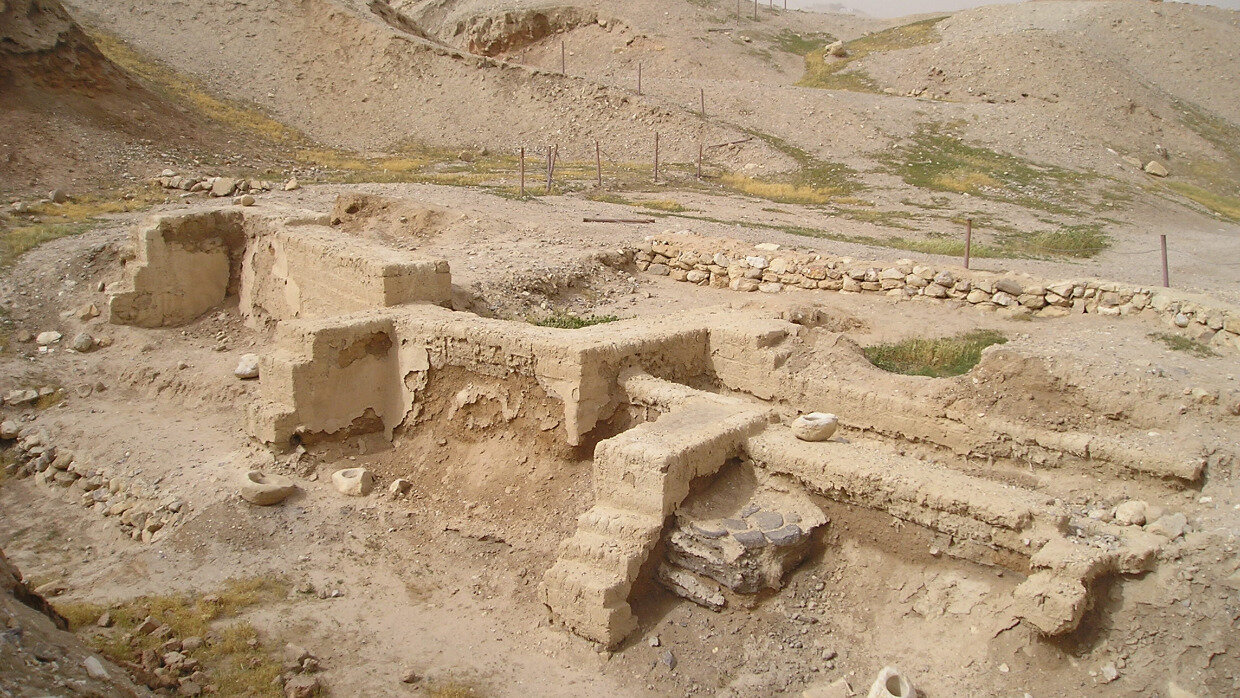 An Open Letter to University Presidents
An Open Letter to University Presidents


4 min read
Jericho is one of the world’s oldest cities and was the first city conquered by the ancient Israelites.
The recent decision by the United Nations Educational, Scientific and Cultural Organization (UNESCO) to declare ancient Jericho as a World Heritage Site has resurfaced interest in the city of Jericho’s significance in Jewish and world history. With a “permanent settlement … [since] the 9th to 8th millennium BC” according to UNESCO, Jericho is one of the world’s oldest cities and was the first city conquered by the ancient Israelites, as described in the book of Joshua.
 Neolithic Staircase inside the Tower, Ministry of Tourism and Antiquities
Neolithic Staircase inside the Tower, Ministry of Tourism and Antiquities
Jericho, then a Canaanite city, was conquered after Joshua and the Israelites surrounded the city walls for seven days, sounding trumpets and shouting cries until the walls miraculously fell. Upon its capture, Joshua cursed the city as a form of retribution for the inhabitants’ resistance to the divinely-promised settlement of the Holy Land --- however, in spite of this curse, already within the biblical period Jews returned to settle in Jericho.
“When we visit Tel Yericho(ancient Jericho), we see all the sites mentioned in the Torah to recognize the spot as ancient Jericho. There is a tower there from before Joshua conquered the city in 1400 BCE,” says Erna Covos, a long-time activist for promoting the Jewish heritage of Jericho who arranges regular tours of the area.
 Tower in Trench, Western view. Ministry of Tourism and Antiquities
Tower in Trench, Western view. Ministry of Tourism and Antiquities
In addition to Tel Yericho’s links to the biblical era, the city of Jericho was inhabited by Jews during the period of the Second Temple perhaps as early as the period of Persian rule in 300 BCE. “The fertility of the Jericho area as well as its administrative importance apparently attracted a priestly population to the site rather early during the Second Temple period. The priestly population of Jericho grew when the area was developed by the Hasmoneans who built royal estates there,” writes historian Joshua Schwartz. The mystery of the priestly community of Jericho was refreshed after a series of funerary caves were found in the area, though some of these caves have been destroyed by construction projects expanding the growing contemporary city.
Herod the Great, the Roman-appointed ruler of Judea, also saw the beauty of Jericho and built his Winter Palace there in addition to a series of aqueducts and date palm plantations. The remains of all of these sites continue to exist to this day --- while Jericho’s famous dates are available around the world.
After the Islamic conquest of the land of Israel in the 7th century, Jews apparently once again lived in Jericho as evidenced by the remains of two synagogues located in the modern city. Both synagogues --- Shalom al Israel and Naaran --- are notable for containing beautiful mosaics. Unfortunately, the Shalom al Israel synagogue was damaged in the year 2000 along with Joseph’s Tomb in Nablus during the Second Intifada, but was subsequently repaired.
 Early Bronze III Palace, Ministry of Tourism and Antiquities
Early Bronze III Palace, Ministry of Tourism and Antiquities
Covos is amongst a small and dedicated group called "Jewish Jericho" that formed after Jericho was transferred from Israeli rule to the Palestinian Authority in 1994, in the first agreement of the Oslo Accords.
The historic site of Tel Yericho was first discovered by the British “Palestine Exploration Fund” in the 19th century, and became known as “Tel Es’Sultan” according to a local tradition. During the period of Israeli rule over Jericho after the Six-Day War in 1967, Israeli archaeologists were able to discover the biblical layer to the city. “They found a deep layer of Iron Age I and Late Bronze/Middle Bronze which is consistent with the entrance of the Israelites,” explains an archaeologist with the Israeli Antiquities Authority of the site.
 Ancient house in Jericho, photo credit Jewish Jericho
Ancient house in Jericho, photo credit Jewish Jericho
After the Oslo Accords transfer, Israeli archaeologists no longer have access to the site, which is under the jurisdiction of the Palestinian Authority, and whose conservation and management is provided by Italian partners. Jewish groups are still provided access to the historic ruins, approximately once a month.
 Mosaic in the Shalom al Israel Synagogue, Photo credit: Jewish Jericho
Mosaic in the Shalom al Israel Synagogue, Photo credit: Jewish Jericho
While much of the recent attention has focused on the politics of UNESCO’s classification of ancient Jericho’s ruins belonging to the “State of Palestine,” and thus an erasure of the site’s Jewish history, Covos sees a silver lining in the decision. “To tell you the truth I am thanking God for the news --- finally the community is waking up from a deep sleep to understand the importance of Jericho.”
